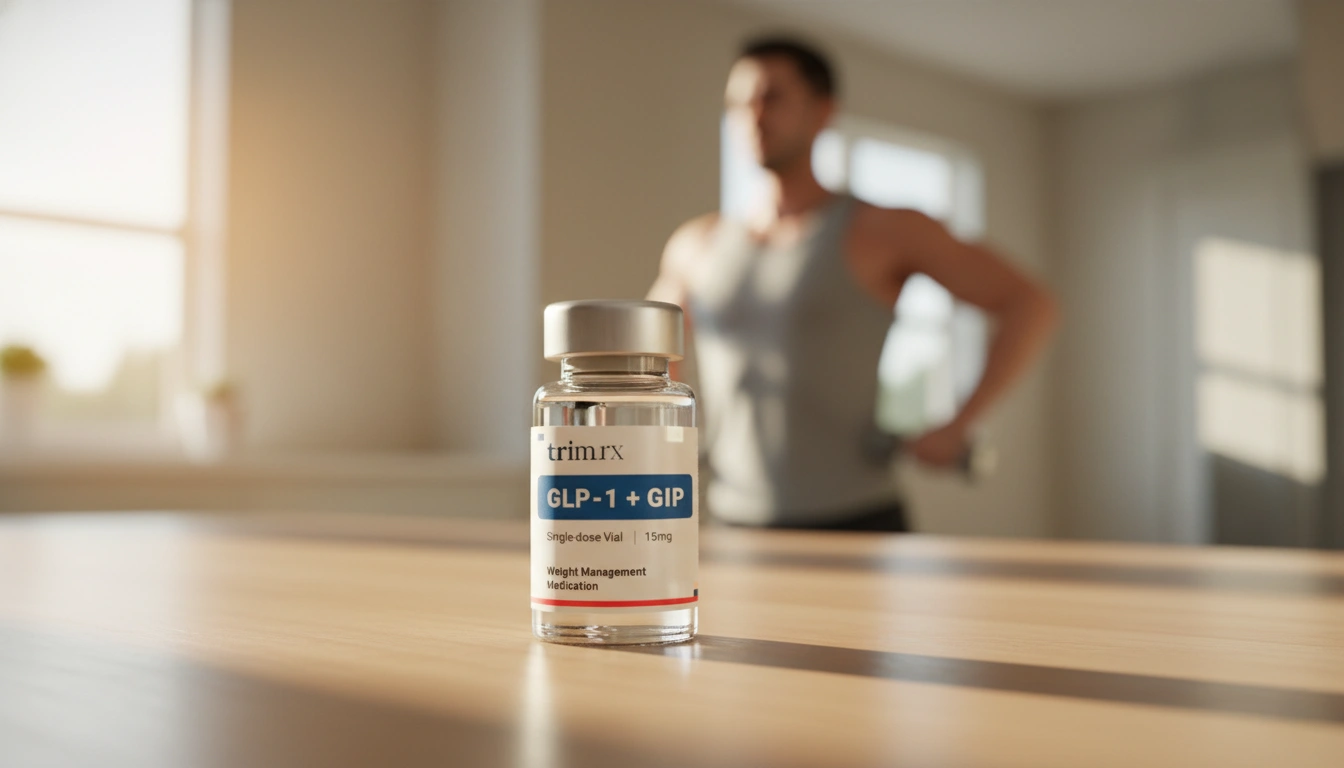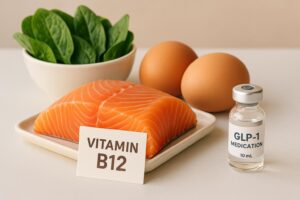How to Inject GLP-1 in the Arm: A Comprehensive Guide

Introduction
Did you know that the way you administer medications can significantly impact their effectiveness? For those using GLP-1 receptor agonists, such as semaglutide and tirzepatide, the injection site can play a crucial role in how well the medication works. This is not just a technical detail; it’s an essential aspect of managing your weight loss journey effectively.
In recent years, GLP-1 medications have gained popularity for their role in weight management and diabetes control. These medications mimic the action of the glucagon-like peptide-1 hormone, which helps regulate appetite and insulin secretion. While many users favor traditional injection sites like the abdomen or thigh, injecting in the arm is an option that can yield different results, particularly regarding absorption rates and comfort.
In this blog post, we will delve into the intricacies of injecting GLP-1 medications in the arm. We will discuss the science behind injection sites, provide a step-by-step guide on how to properly administer the injection in your arm, and explore the benefits and challenges associated with this method. By the end of this article, you will have a comprehensive understanding of how to inject GLP-1 in the arm safely and effectively.
Together, we’ll explore the technical aspects, practical tips, and some common questions related to this topic. Whether you’re just starting your journey with GLP-1 medications or looking to optimize your injection technique, this guide is designed to empower you with the knowledge you need for safe and effective self-administration.
Understanding GLP-1 Medications
What Are GLP-1 Medications?
GLP-1 medications, including semaglutide, Ozempic®, and tirzepatide, are a class of drugs that mimic the effects of the GLP-1 hormone. They are primarily used to support weight loss and manage type 2 diabetes by:
- Reducing appetite: They act on the brain to promote feelings of fullness, decreasing overall food intake.
- Slowing gastric emptying: This helps regulate blood sugar levels by controlling the rate at which food moves from the stomach to the intestines.
- Enhancing insulin secretion: They stimulate insulin production in response to meals, helping to lower blood sugar levels.
These medications are often recommended as part of a comprehensive weight management plan that includes dietary changes and increased physical activity.
Why Injection Site Matters
The effectiveness of GLP-1 medications can vary depending on the injection site. Subcutaneous injections deliver medication into the fatty layer beneath the skin, where absorption rates can differ based on the location of the injection. Common injection sites include:
- Abdomen: Known for faster absorption due to its rich blood supply.
- Thighs: Absorption may be slower but offers a larger surface area for injection.
- Upper arm: This site can provide a different absorption profile, potentially affecting medication efficacy.
Understanding these differences can help users choose the best injection site for their individual needs, ultimately supporting their journey toward effective weight management.
Preparing for an Arm Injection
Gather Your Supplies
Before you begin, make sure you have all the necessary supplies ready:
- GLP-1 medication pen or vial: Ensure it is at the correct temperature (usually refrigerated before use).
- Syringe and needle (if not using a pen): Typically, a 25- to 27-gauge needle is recommended for subcutaneous injections.
- Alcohol swabs: For sanitizing the injection site.
- Sharps container: For safe disposal of needles.
Wash Your Hands
Start by washing your hands thoroughly with soap and water for at least 20 seconds. This step is crucial to minimize the risk of infection.
Select the Injection Site
For arm injections, the best area is the outer part of the upper arm, where there is sufficient subcutaneous fat. Avoid areas that are bruised, scarred, or have any signs of irritation.
Clean the Injection Site
Using an alcohol swab, clean the selected area of your arm in a circular motion and allow it to air dry. This step helps prevent infection and ensures a sterile environment for the injection.
How to Inject GLP-1 in the Arm: Step-by-Step Guide
Step 1: Prepare the Injection
If you’re using a medication pen, follow the manufacturer’s instructions to prepare it. For syringes, draw the prescribed dose of medication into the syringe.
Step 2: Pinch the Skin
Using your non-dominant hand, pinch a fold of skin at the injection site. This technique helps ensure that the needle goes into the subcutaneous fat rather than the muscle.
Step 3: Insert the Needle
Hold the syringe or pen at a 90-degree angle to your skin and insert the needle quickly and firmly into the pinched fold of skin. If you’re using a syringe, ensure the needle goes in completely.
Step 4: Inject the Medication
Slowly push the plunger down to inject the medication. If you’re using a pen, press the button to deliver the dose.
Step 5: Hold the Needle in Place
Keep the needle in place for about 5 to 10 seconds after injecting to ensure the full dose is delivered into your system.
Step 6: Remove the Needle
Withdraw the needle at the same angle it was inserted. If you experience any bleeding, apply gentle pressure with a cotton ball or gauze to the injection site.
Step 7: Dispose of the Needle
Immediately dispose of the used needle and syringe in a designated sharps container. Never throw needles in regular trash.
Step 8: Store Your Medication
If using a pen, store it according to the instructions provided by your healthcare provider or the packaging. Typically, this will involve refrigerating the medication unless it’s currently in use.
Benefits of Injecting in the Arm
Enhanced Comfort
For many users, injecting in the arm can be more comfortable than other sites, especially if they have a preference or have experienced discomfort in the abdomen or thighs.
Variability in Absorption
Some anecdotal evidence suggests that injecting in the arm may lead to more consistent absorption rates for certain individuals. This variability can be beneficial for those who may not respond as well to injections in other areas.
Easier Accessibility
The arm may be more accessible for some individuals, especially those who are new to self-injection. This can reduce anxiety and increase confidence when administering the medication.
Challenges and Considerations
Injection Technique
Proper technique is critical for ensuring the medication is delivered effectively. As with any injection, there is a learning curve, and it may take practice to become proficient.
Individual Variability
Every individual’s body is different, and what works for one person may not be the best for another. It’s essential to monitor how the body reacts to injections in different sites and make adjustments as necessary.
Potential for Lipohypertrophy
Rotating injection sites is crucial to prevent lipohypertrophy, which is the thickening of fat tissue at injection sites. This can occur if the same area is used repeatedly without allowing for healing.
Conclusion
Injecting GLP-1 medications in the arm can offer several benefits, including comfort and potentially different absorption rates. By following the proper techniques outlined in this guide, you can enhance your self-administration experience and optimize your weight management journey.
As you navigate your path to better health, remember that our team at TrimRx is here to support you. Our personalized weight loss programs combine advanced medical science with compassionate care, ensuring you receive the best possible assistance every step of the way. If you haven’t done so already, consider taking our free assessment quiz to see if you qualify for our prescription weight loss medications.
FAQ
How often should I rotate my injection sites?
It’s recommended to rotate your injection sites each week to prevent irritation and complications such as lipohypertrophy. Keeping a log of where you’ve injected can help.
What should I do if I experience pain or discomfort at the injection site?
If you notice persistent pain, swelling, or redness at the injection site, consult your healthcare provider. They can help determine if there’s an underlying issue.
Can I use the arm for every injection?
While injecting in the arm can be effective, it’s essential to rotate sites to avoid complications. Consider using a mix of the abdomen, thighs, and arms.
How long do GLP-1 medications stay effective after opening?
Most GLP-1 medications should be used within a specified timeframe after opening, typically 28 days. Always check the specific guidelines provided by your healthcare provider or the medication packaging.
Are there any specific precautions I should take when injecting in the arm?
Ensure the area is clean, avoid injecting into bruised or irritated skin, and stay aware of how your body responds to injections at this site.
By mastering the art of injecting GLP-1 medications in the arm, you take an essential step toward effective weight management. Remember, we are in this together, and your journey to better health is supported every step of the way.

Transforming Lives, One Step at a Time
Keep reading
Vitamin B12 and GLP-1 Medications: What to Know
GLP-1 medications can lower B12 absorption and intake; learn symptoms, food sources, supplement options, and how to monitor levels.
Semaglutide Injection Site Reactions: What To Know
Learn why semaglutide injections can cause redness, swelling or nodules, how to prevent and treat them, and when to seek medical care.
TrimRx vs Friday’s
Compare TrimRx and Friday’s telehealth GLP-1 weight-loss programs: pricing, medical support, coaching, delivery, and which fits your needs.



